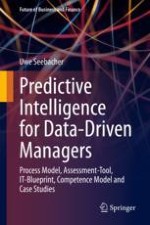This book describes how companies can easily and pragmatically set up and realize the path to a data-driven enterprise, especially in the marketing practice, without external support and additional investments. Using a predictive intelligence (PI) ecosystem, the book first introduces and explains the most important concepts and terminology. The PI maturity model then describes the phases in which you can build a PI ecosystem in your company. The book also demonstrates a PI self-test which helps managers identify the initial steps. In addition, a blueprint for a PI tech stack is defined for the first time, showing how IT can best support the topic. Finally, the PI competency model summarizes all elements into an action model for the company. The entire book is underpinned with practical examples, and case studies show how predictive intelligence, in the spirit of data-driven management, can be used profitably in the short, medium, and long terms.
